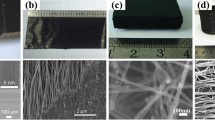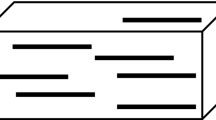Abstract
DNA nanotubes (DNTs) with user-defined shapes and functionalities have potential applications in many fields. So far, compared with numerous experimental studies, there have been only a handful of models on the mechanical properties of such DNTs. This paper aims at presenting a multiscale model to quantify the correlations among the pre-tension states, tensile properties, encapsulation structures of DNTs, and the surrounding factors. First, by combining a statistical worm-like-chain (WLC) model of single DNA deformation and Parsegian’s mesoscopic model of DNA liquid crystal free energy, a multiscale tensegrity model is established, and the pre-tension state of DNTs is characterized theoretically for the first time. Then, by using the minimum potential energy principle, the force-extension curve and tensile rigidity of pre-tension DNTs are predicted. Finally, the effects of the encapsulation structure and surrounding factors on the tensile properties of DNTs are studied. The predictions for the tensile behaviors of DNTs can not only reproduce the existing experimental results, but also reveal that the competition of DNA intrachain and interchain interactions in the encapsulation structures determines the pre-tension states of DNTs and their tensile properties. The changes in the pre-tension states and environmental factors make the monotonic or non-monotonic changes in the tensile properties of DNTs under longitudinal loads.
Similar content being viewed by others
References
DOUGLAS, S. M., DIETZ, H., LIEDL, T., HOGBERG, B., GRAF, F., and SHIH, W. M. Self-assembly of DNA into nanoscale three-dimensional shapes. nature, 459(7245), 414–418 (2009)
MARRAS, A. E., ZHOU, L. F., SU, H. J., and CASTRO, C. E. Programmable motion of DNA origami mechanisms. Proceedings of the National Academy of Sciences of the United States of America, 112(3), 713–718 (2015)
JIANG, S. X., GE, Z. L., MOU, S., YAN, H., and FAN, C. H. Designer DNA nanostructures for therapeutics. Chem, 7(5), 1156–1179 (2020)
KAUERT, D. J., KURTH, T., LIEDL, T., and SEIDEL, R. Direct mechanical measurements reveal the material properties of three-dimensional DNA origami. Nano Letters, 11(12), 5558–5563 (2011)
MA, Z. P., KIM, Y. J., PARK, S., HIRAI, Y., TSUCHIYA, T., KIM, D. N., and TABATA, O. Direct measurement of transversely isotropic DNA nanotube by force-distance curve-based atomic force microscopy. Micro and Nano Letters, 10(10), 513–517 (2015)
NASKAR, S. and MAITI, P. K. Mechanical properties of DNA and DNA nanostructures: comparison of atomistic, Martini and oxDNA. Journal of Materials Chemistry B, 9, 5102–5113 (2021)
LIEDL, T., HOGBERG, B., TYTELL, J., INGBER, D. E., and SHIH, W. M. Self-assembly of three-dimensional prestressed tensegrity structures from DNA. Nature Nanotechnology, 5(7), 520–524 (2010)
PFITZNER, E., WACHAUF, C., KILCHHERR, F., PELZ, B., SHIH, W. M., RIEF, M., and DIETZ, H. Rigid DNA beams for high-resolution single-molecule mechanics. Angewandte Chemie (International Edition in English), 52(30), 7766–7771 (2013)
ARBONA, J. M., AIME, J. P., and ELEZGARAY, J. Modeling the mechanical properties of DNA nanostructures. Physical Review E, 86(5), 051912 (2012)
STREY, H. H., PARSEGIAN, V. A., and PODGORNIK, R. Equation of state for DNA liquid crystals: fluctuation enhanced electrostatic double layer repulsion. Physical Review Letters, 78(5), 895–898 (1997)
GANG, B. Mechanics of biomolecules. Journal of the Mechanics and Physics of Solids, 50(11), 2237–2274 (2002)
BUSTAMANTE, C., BRYANT, Z., and SMITH, S. B. Ten years of tension: single-molecule DNA mechanics. nature, 421(6921), 423–427 (2003)
ZHANG, N. H. and SHAN, J. Y. An energy model for nanomechanical deflection of cantilever-DNA chip. Journal of the Mechanics and Physics of Solids, 56(6), 2328–2337 (2008)
SCHIFFELS, D., LIEDL, T., and FYGENSON, D. K. Nanoscale structure and microscale stiffness of DNA nanotubes. ACS Nano, 7(8), 6700–6710 (2013)
ZHOU, L. F., MARRAS, A. E., SU, H. J., and CASTRO, C. E. DNA origami compliant nanostructures with tunable mechanical properties. ACS Nano, 8(1), 27–34 (2014)
LIU, Y. Z. and XUE, Y. Stability analysis of helical rod based on exact Cosserat model. Applied Mathematics and Mechanics (English Edition), 32(5), 603–612 (2011) https://doi.org/10.1007/s10483-011-1442-8
STREY, H. H., PARSEGIAN, V. A., and PODGORNIK, R. Equation of state for polymer liquid crystals: theory and experiment. Physical Review E, 59(1), 999–1008 (1999)
BAUMANN, C. G., BLOOMFIELD, V. A., SMITH, S. B., BUSTAMANTE, C., and BLOCK, S. M. Stretching of single collapsed DNA molecules. Biophysical Journal, 78(4), 1965–1978 (2000)
OBERMAYER, B. and FREY, E. Tension dynamics and viscoelasticity of extensible wormlike chains. Physical Review E, 80, 040801 (2009)
LU, W., LI, X. B., ZHANG, C. Y., and ZHANG, N. H. The model of torsional rigidity of DNA nanotube (in Chinese). Chinese Quarterly of Mechanics, 39(1), 33–38 (2018)
ZHOU, H. J., ZHANG, Y., and OUYANG, Z. C. Bending and base-stacking interactions in double-stranded DNA. Physical Review Letters, 82(22), 4560–4563 (1999)
WANG, J. Z. and LI, R. H. Stretching strongly confined semiflexible polymer chain. Applied Mathematics and Mechanics (English Edition), 35(10), 1233–1238 (2014) https://doi.org/10.1007/s10483-014-1862-9
WU, C. X., ZHANG, N. H., ZHANG, C. Y., and WU, J. Z. Regulation of thermoelastic properties of concave-packaged DNA adsorption films and its relevant microcantilever detection signals. Acta Mechanica Sinica (English Series), 37(4), 705–711 (2021)
MARKO, J. F. and SIGGIA, E. D. Stretching DNA. Macromolecules, 28(26), 8759–8770 (1995)
WANG, J. Z., QIAN, J., and GAO, H. J. Stability of molecular adhesion mediated by confined polymer repellers and ligand-receptor bonds. Molecular and Cellular Biomechanics, 5(1), 19–25 (2008)
ODIJK, T. Stiff chains and filaments under tension. Macromolecules, 28(20), 7016–7018 (1995)
MANNING, G. S. The persistence length of DNA is reached from the persistence length of its null isomer through an internal electrostatic stretching force. Biophysical Journal, 91(10), 3607–3616 (2006)
GEGGIER, S., KOTLYAR, A., and VOLOGODSKII, A. Temperature dependence of DNA persistence length. Nucleic Acids Research, 39(4), 1419–1426 (2011)
BAUMANN, C. G., SMITH, S. B., BLOOMFIELD, V. A., and BUSTAMANTE, C. Ionic effects on the elasticity of single DNA molecules. Proceedings of the National Academy of Sciences of the United States of America, 94(12), 6185–6190 (1997)
STRICK, T. R., ALLEMAND, J. F., BENSIMON, D., and CROQUETTE, V. Stress-induced structural transitions in DNA and proteins. Annual Review of Biophysics and Biomolecular Structure, 29(1), 523–543 (2000)
CHENG, C. L., GONG, B., and QIAN, J. Mechanical responses of crosslinked biopolymer networks (in Chinese). Applied Mathematics and Mechanics, 37(5), 441–458 (2016)
JOSHI, H., KAUSHIK, A., SEEMAN, N. C., and MAITI, P. K. Nanoscale structure and elasticity of pillared DNA nanotubes. ACS Nano, 10(8), 7780–7791 (2016)
XIAO, H. DNA elastic nonlinearities: remarkable combination of high compliance and high rigidity (in Chinese). Journal of Shanghai University (Nature Science), 18(5), 441–447 (2012)
Author information
Authors and Affiliations
Corresponding author
Additional information
Citation: LIU, H. L., ZHANG, N. H., and LU, W. Multiscale tensegrity model for the tensile properties of DNA nanotubes. Applied Mathematics and Mechanics (English Edition), 44(3), 397–410 (2023) https://doi.org/10.1007/s10483-023-2965-8
Project supported by the National Natural Science Foundation of China (Nos. 12172204, 11772182, 11272193, and 10872121), the Program of Shanghai Municipal Education Commission (No. 2019-01-07-00-09-E00018), and the Natural Science Foundation of Shanghai of China (No. 22Z00142)
Rights and permissions
About this article
Cite this article
Liu, H., Zhang, N. & Lu, W. Multiscale tensegrity model for the tensile properties of DNA nanotubes. Appl. Math. Mech.-Engl. Ed. 44, 397–410 (2023). https://doi.org/10.1007/s10483-023-2965-8
Received:
Revised:
Published:
Issue Date:
DOI: https://doi.org/10.1007/s10483-023-2965-8




